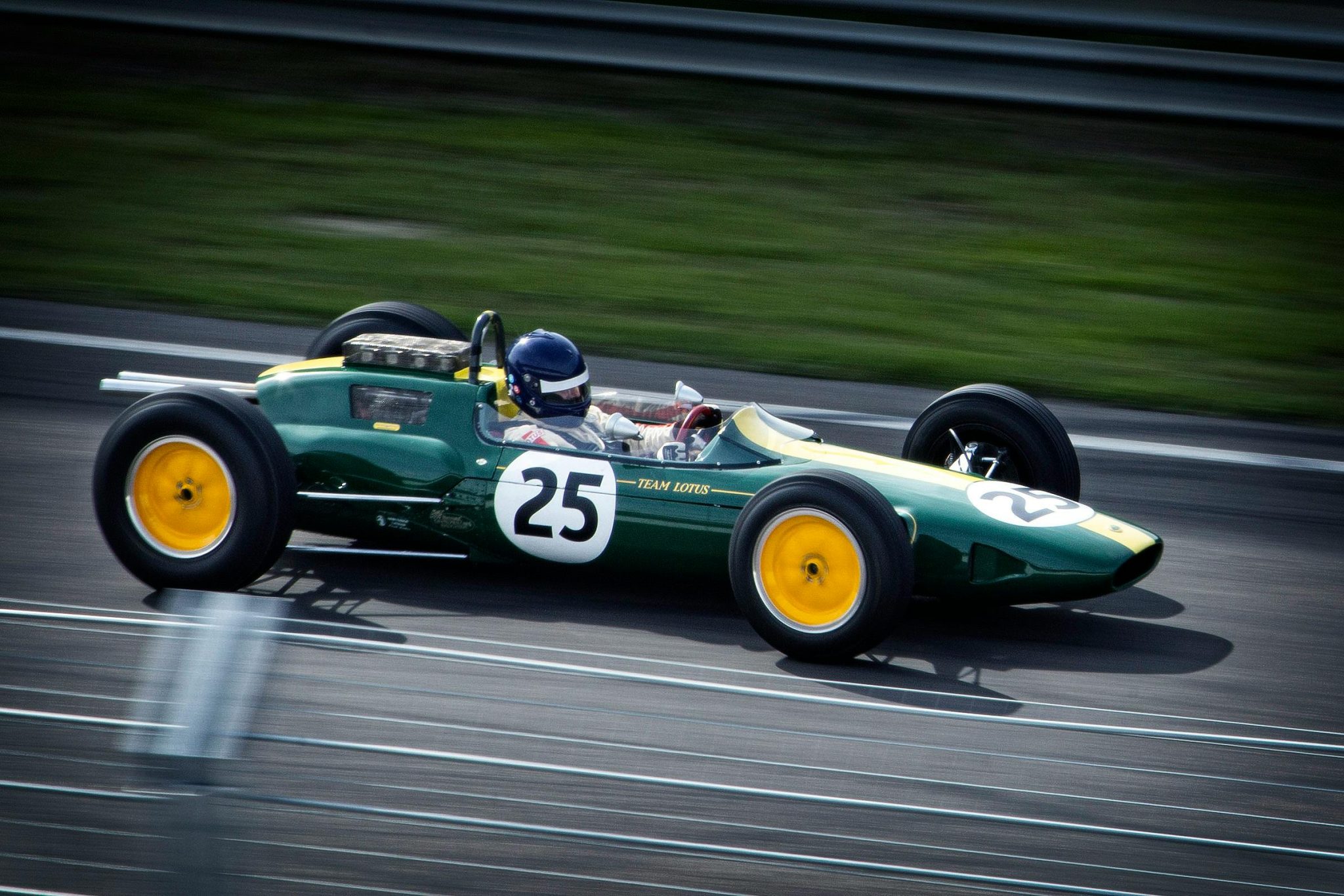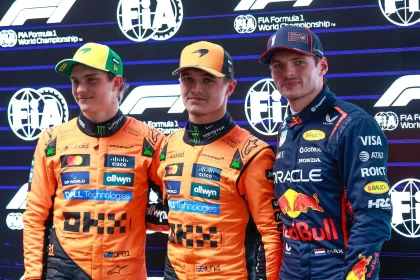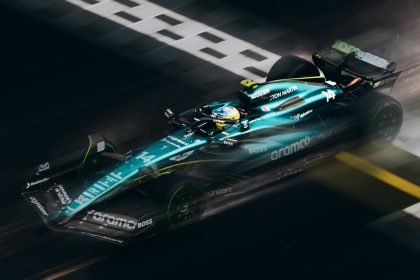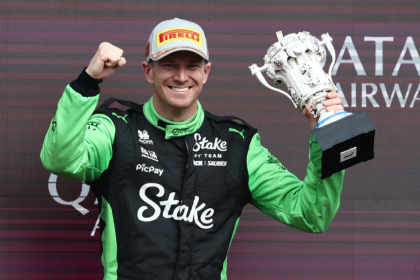There’s a peculiar irony in watching Formula 1 become “cool” again. The sport that once prided itself on being the world’s most exclusive, dangerous, and technologically advanced playground has, in the past decade, become a global pop-culture phenomenon. Netflix’s Drive to Survive did for F1 what MTV did for music videos—suddenly, everyone wanted in. The paddock is now a catwalk, the grandstands a sea of influencers, and the pit wall a backdrop for TikTok dances. But as the champagne flows and the hashtags multiply, I can’t help to ask: what did Formula 1 leave behind in its rush to be loved by the world?
- From Obscurity to Obsession: The Netflix Effect
- The Forgotten Teams, Drivers, and Circuits: F1’s Vanishing Heritage
- The Price of Popularity: Regulation, Safety, and the Death of Danger
- The Drama Machine: When Racing Became Reality TV
- The Lost Art of Engineering: When Innovation Meant Risk
- The Human Element: When Drivers Were Gods, Not Brands
- The Numbers Game: Statistics, Records, and the Illusion of Progress
- The Soul of the Sport: What F1 Forgot
- Waste a bit more time
From Obscurity to Obsession: The Netflix Effect
Let’s not kid ourselves—Formula 1 was never truly “uncool.” It was just exclusive, a sport for those who could decipher the difference between a blown diffuser and a double diffuser, who knew that Jean Alesi’s single win was a tragedy, not a triumph. But with Liberty Media’s acquisition in 2017 and the subsequent launch of Drive to Survive, the sport was repackaged for mass consumption. Suddenly, the world cared about Daniel Ricciardo’s smile, Guenther Steiner’s vocabulary, and the existential angst of mid-grid teams.
Drive To Survive aired on Netflix not long after Liberty Media took the reigns of F1, they have tried to make racing appeal to a younger audience and both sexes equally. I’m older and have followed F1 for 40 years, being interested in engineering and vehicles has caused me to follow the races most of my life, I love the technical side of things. The new stuff is all very drama, back in the day you hardly ever heard from the drivers or teams, now they’re contracted to speak and add personality to things. It’s great to see the sport move on from the old times, it’s a bit too ‘Kardashian’ for my tastes, but if it gets a younger audience involved and the technical side of things stays the main focus of the races, I’m all for it.
Reddit user
The numbers don’t lie. Since 2018, global TV audiences have soared, with the United States—once a barren wasteland for F1 fandom—now boasting three Grands Prix and record-breaking attendance. Social media engagement is at an all-time high, and the sport’s digital footprint rivals that of the NBA and NFL. But as the sport basks in its newfound relevance, the question lingers: what’s been lost in translation?
The Forgotten Teams, Drivers, and Circuits: F1’s Vanishing Heritage
In the rush to embrace the future, Formula 1 has developed a selective memory. The sport’s history is littered with the carcasses of teams that dared to dream—Minardi, Jordan, Ligier, Arrows, and the ill-fated Caterham and HRT. These were not just grid-fillers; they were the lifeblood of the paddock, the source of improbable upsets and human drama. Who remembers the heartbreak of Minardi’s near-miracle at Australia 2002, or the yellow fever of Jordan’s Spa 1998 triumph?
And what of the circuits? The calendar is now a global circus, with Miami, Las Vegas, and Jeddah elbowing out the likes of Imola, Estoril, and Adelaide. The Valencia Street Circuit, once hailed as the future, now lies abandoned—a monument to F1’s short attention span.
Many tracks have been on the calendar for decades, and are world renowned, such as Spa-Francorchamps, which shares its status as a mecca of speed with the Temple of Speed, aka Monza. There are other tracks that have been built and certified by the FIA to Grade 1 status, which is needed for Formula One to race there. Yet, through economics, mismanagement, or simply bad timing, many tracks have come and gone throughout the decades of the world championship. Some were dropped for safety reasons… Others, however, have simply been forgotten, lost to the annals of time and rarely, if ever, talked about, even amongst F1 enthusiasts.
Supercars.net
The Price of Popularity: Regulation, Safety, and the Death of Danger
Let’s be clear: no one with a soul mourns the days when drivers died with alarming regularity. The safety revolution that followed Imola 1994 was necessary, overdue, and, frankly, miraculous. But as the FIA layered on regulation after regulation—banning active suspension, traction control, and now, with the 2026 rules, mandating carbon net-zero targets—the sport has become a sanitized, risk-managed enterprise.
The cars are technological marvels, but the sense of danger—the knowledge that every lap was a dance with death—has faded.
For me the slow death started with the semi-automatic gearbox. Then driver aids were added (and partially banned later). Then the data wars started, then the emasculation of circuits, the ever restrictive rules, the hybrid engines, and the constant talk of being ‘the pinnacle.’ The constant tinkering with the rules and procedures, the shunning of fans, the abandonment of much of Europe, the double points fracas, the list is too long. But, every blunder and the ongoing talk of reverse grids etc. all contributed to the water drip torture. Well, the halo was the straw that broke my back. The halo is all I can see when I glance at the cars now. 42 years, 44 races (live) in 11 countries and I was done.
uffen, Autosport Nostalgia Forum
The Drama Machine: When Racing Became Reality TV
Formula 1 has always been about drama—Senna vs. Prost, Schumacher’s Machiavellian maneuvers, the heartbreak of Mansell’s 1986 tire blowout. But today’s drama is manufactured, edited, and served in bite-sized episodes. The Netflixification of F1 has created heroes and villains, but it has also flattened the narrative. Every team is now a “storyline,” every driver a “character arc.” The nuance, the technical mastery, the grind of a season—these are often lost in the edit.
Drive to Survive is the only reason I check in on some of these posts and think I know something about F1. (I don’t)
Reddit user
The sport’s new fans are passionate, vocal, and, at times, blissfully unaware of the decades of context that shaped the grid. There’s nothing wrong with that—every fan starts somewhere—but the risk is that F1 becomes just another content factory, its history reduced to a highlight reel.
The Lost Art of Engineering: When Innovation Meant Risk
There was a time when Formula 1 was a laboratory for mad scientists. The six-wheeled Tyrrell, the Brabham fan car, the turbo monsters of the 1980s—these were the products of a sport that valued ingenuity over conformity. Today, the regulations are so tight that innovation is measured in millimeters, not revolutions. The cost cap, the standardized parts, the wind tunnel restrictions—all designed to level the playing field, but at the cost of the sport’s soul.
Throughout the long and rich history of Formula 1, teams and engineers have worked tirelessly to innovate and revolutionize their race cars to push every ounce of power and speed from it as possible. Nowadays, there are stiff regulations and specific layouts teams must follow, however, back in the ‘golden years’ of racing there were no such restrictions. This led to some crazy designs, neat ideas, and utterly ridiculous creations. Most disappear from the memory of the average F1 enthusiast, but, although they may be strange/old, these vehicles can serve as a sign of what to do and what not to do in motor sports.
HotCars.com
The Human Element: When Drivers Were Gods, Not Brands
In the age of social media, every driver is a brand, every utterance a potential meme. But there was a time when drivers were mythic figures, their flaws and virtues magnified by distance. Fangio’s Nürburgring miracle in 1957, Lauda’s fiery resurrection, Senna’s spiritual intensity—these were stories that transcended sport.
Today, drivers are more accessible than ever, but also more managed, more polished, more… ordinary. The raw, unfiltered humanity of a Nigel Mansell pushing his car across the Dallas finish line, only to collapse in exhaustion, feels like a relic of another age.
The Numbers Game: Statistics, Records, and the Illusion of Progress
Formula 1 loves its numbers—most wins, most poles, most fastest laps. But as the calendar expands and the points system inflates, records are broken with numbing regularity. Lewis Hamilton’s 105 wins, Verstappen’s streaks, the endless parade of “youngest ever” and “most ever”—these are impressive, but they risk becoming meaningless in a sport that changes its rules as often as its tire compounds.
The historical context matters. In the 1980s, a season had 16 races; today, it’s 24. Points were once a rare commodity; now, half the grid scores every Sunday. The sport’s obsession with “the pinnacle” has created a treadmill of achievement, but at what cost?
The Soul of the Sport: What F1 Forgot
So, what did Formula 1 forget when it became “cool” again? It forgot that its greatest strength was not its popularity, but its authenticity. The sport was never meant to be for everyone—it was meant to be for those who cared enough to understand it. In its quest for mass appeal, F1 has risked becoming just another entertainment product, its history and complexity sacrificed on the altar of accessibility.
But all is not lost. The ghosts of the past still haunt the paddock—the memory of Imola, the roar of V12s at Monza, the improbable heroics of underdog teams. The challenge for Formula 1, as it hurtles into its next era, is to remember that being “cool” is not the same as being meaningful.
It is not always possible to be the best, but it is always possible to improve your own performance.
Jackie Stewart
Formula 1 would do well to heed those words—not just on the stopwatch, but in the soul of the sport.
Waste a bit more time
- Read the full Reddit thread on F1’s sudden popularity and the Netflix effect: Reddit: What’s up with F1 suddenly being so popular?
- Explore the forgotten tracks of Formula 1: Supercars.net: Formula One – The Forgotten Tracks
- Dive into the wildest races in F1 history: Formula1.com: Dallas ’84 will never be forgotten
- See the list of F1 models everyone forgot: HotCars: 10 F1 Models Everyone Forgot Existed
- Join the nostalgia (and the debate) on when F1 “died”: Autosport Nostalgia Forum: The Day Formula One Died…













